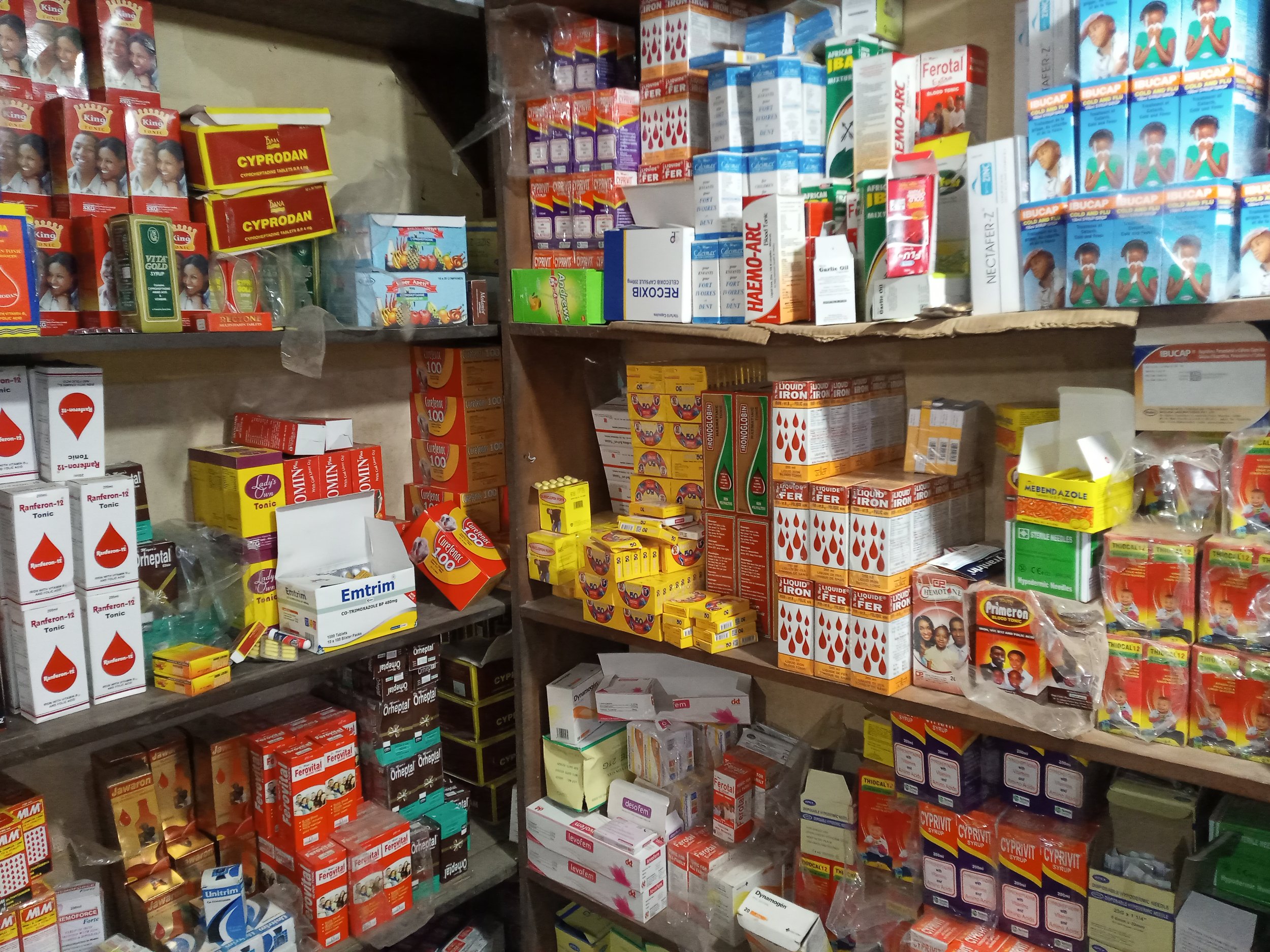Original or Fake: A Nation’s Counterfeit Goods Dilemma
Should you encounter a Nigerian and inquire about their experience with counterfeit goods, their response might astonish you. Recently, the media was abuzz with reports of officials from the National Agency for Food and Drug Administration and Control (NAFDAC) conducting a market sweep in Eastern Nigeria. According to these reports, officials discovered miniature factories within the market, churning out counterfeit beverages under deplorable sanitary conditions. These operations lacked any form of quality assurance and had not received approval from the appropriate regulatory bodies, reflecting a shocking indifference towards human life. This situation paints a grim picture of the current state of affairs in Nigeria.
A display of drugs. Source: Wikimedia Commons; Credit: Tolatheart
Unsurprisingly, Nigerians turned to social media to express their shock and disbelief, often employing humor through witty posts and videos. Humor has always been a coping mechanism for many Nigerians when confronted with adversity.
In the aftermath, numerous Nigerians shared online anecdotes about how they had casually inspected their pantries, only to discover that the widely-used soy sauce brand “AMOY”—even those purchased from upscale supermarkets—was, in fact, counterfeit. Other everyday items such as bottled water, carbonated drinks, sanitary pads, alcoholic beverages, toothpaste, canned foods, skincare products, bath soap, and chocolates were also found to have counterfeit versions widely available in the markets and heavily consumed by the unsuspecting public. This revelation further underscores the severity of the counterfeit goods issue in Nigeria.
According to the World Health Organisation, approximately 10% of medicines in developed regions are likely counterfeit. This figure escalates nearly 50% in Sub-Saharan Africa. The Pharmaceutical Security Institute (PSI) further underscores this issue, revealing that in 2021, close to 6,000 incidents of pharmaceutical crime were recorded. North America accounted for 2,442 of these incidents, while Africa reported 187. However, these figures may only partially represent the extent of the problem, as many incidents go unreported and, thus, unrecorded.
Adaeze Ogoh
At the heart of this crisis lies greed. The global counterfeit drug and product market is estimated to exceed $200 billion.
In Nigeria, the situation is particularly concerning. Despite having successfully reduced the prevalence of counterfeit products, including drugs, from 40% in 2001 to 16.7% in 2005, recent reports indicate a troubling resurgence. Between 2015 and 2016, nearly 80% of products, including drugs, were found to be counterfeit. Given these alarming statistics, the potential impact on population and global health outcomes is grave. This highlights the urgent need for effective strategies to combat the proliferation of counterfeit goods.
At the heart of this crisis lies greed. The global counterfeit drug and product market is estimated to exceed $200 billion. Poverty also plays a significant role in driving this market, as these counterfeit products are often cheaper and more accessible, thereby increasing demand, particularly in less affluent areas. This not only exacerbates health inequalities but also reduces life expectancy.
The annual cost of care for individuals who have used counterfeit antimalarial treatments ranges from $12 million to $44.7 million in Sub-Saharan Africa. This burdens an already strained economy, with a GDP of only $2.07 trillion, a mere 8.8% of the USA’s GDP.
These facts underscore the reality that addressing this issue will require more than just consumer goodwill and government intervention. It calls for a comprehensive, multi-faceted approach to mitigate the proliferation of counterfeit goods effectively.
What are the consequences?
One of the significant impacts of counterfeit drug usage is the global increase in antimicrobial resistance, a pressing global health concern. While the abuse of drugs and microbes often garners the most attention as the primary causative factor, the role of counterfeit drugs is frequently overlooked.
Counterfeit drugs and products often contain falsified and substandard ingredients, which could act as endocrine disruptors or carcinogens. These substances have the potential to bioaccumulate in consumers, interfering with normal physiological functions, including those of the reproductive, digestive, immune, and nervous systems.
These counterfeit products can lead to a loss of confidence and trust in healthcare systems and providers. Furthermore, counterfeit drugs and products are a leading cause of organ failure. They are also responsible for nearly 500,000 deaths annually across Sub-Saharan Africa. This stark reality underscores the urgent need for effective measures to combat the proliferation of counterfeit goods.
Solutions
A primary solution to this issue is to declare a state of emergency on counterfeit drugs and products globally or nationally. This action would significantly heighten the attention given to this issue, mobilizing all necessary resources and stakeholders to tackle the challenge. In essence, the same level of attention devoted to antimicrobial resistance and climate change should be directed toward counterfeit drugs and products, given the ticking time bomb they represent.
Secondly, a robust political will, particularly from governments in Sub-Saharan Africa, is crucial. This would empower relevant regulatory agencies, such as Nigeria's NAFDAC, Standard Organization of Nigeria (SON), and The Federal Competition and Consumer Protection Commission (FCCPC), and boost morale and improve staff welfare, thereby enhancing their capacity to combat this challenge. This approach would foster synergy between regulatory and law enforcement agencies, facilitating collaboration, data exchange, and policy and legislation implementation. It would also address the porous borders common to most Sub-Saharan countries, enabling customs officials to validate only original imported drugs and products and reject counterfeits at the ports.
Manufacturers should lead aggressive promotional campaigns to educate consumers about original products and drugs' packaging and branding features. This would enable consumers to distinguish genuine products from counterfeits. Encouraging consumers to act as whistleblowers, with potential rewards, could also be beneficial. Manufacturers should utilize social media, including content creators and influencers, to extend their reach beyond traditional media outlets such as TV, radio, and local newspapers.
Health professionals should also play a key role in raising awareness among the public, particularly parents, about the use of original drugs and the potential consequences of consuming counterfeit drugs. Additionally, product marketers, supply chain professionals, and retail store managers should exercise due diligence and invest appropriately in procuring products from suppliers.
Conclusion
In conclusion, controlling this menace is achievable, and everyone has a role to play. The combined efforts of the public, private entities, and the government are essential in creating a society free from counterfeits.

